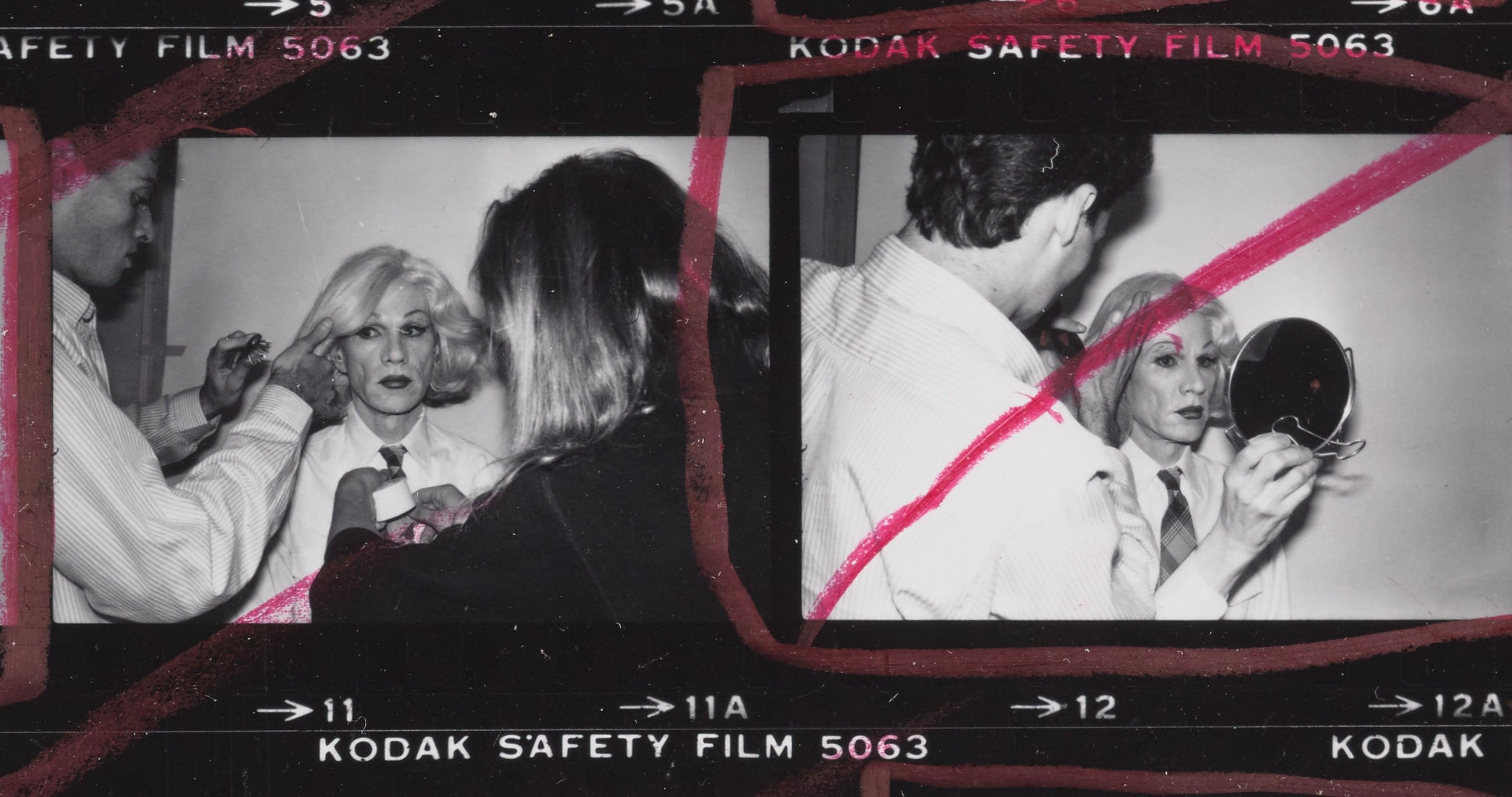
There is precious little work by Pop icon Andy Warhol that hasn’t already been exhibited, analyzed, and probably emblazoned on a t-shirt. But one of the few aspects of the late artist’s work that’s been rarely seen by the public is the tremendous cache of photographic contact sheets he accumulated between 1976 and 1987, a period when he was in the habit of maintaining a daily visual diary of photos.
In 2014, the Andy Warhol Foundation chose Stanford University’s Cantor Arts Center to receive this collection: 3,600 contact sheets containing 130,000 exposures. In return for the trove, the Cantor Center’s archivist spent three years digitizing the material, and a selection is now on view in a revelatory show co-curated by professors Peggy Phelan and Richard Meyer, “Contact Warhol: Photography Without End.”
Andy Warhol, Detail from Contact Sheet [Photo shoot with Andy Warhol with shadow] (1986). © The Andy Warhol Foundation for the Visual Arts, Inc.
Andy Warhol, Unidentified Photographers (ca. 1981). The Andy Warhol Museum, Pittsburgh; © 2018 The Andy Warhol Foundation for the Visual Arts, Inc. / Licensed by Artists Rights Society (ARS), New York.
As part of the gift, the Cantor Center has the right to select, enlarge, and print images from the contact sheets, which Warhol didn’t intend to have published—a notion the curators grapple with in the impressive exhibition catalogue. The images include Bianca Jagger shaving her armpits, Keith Haring posing with his boyfriend, plus shots of Liza Minnelli, Jean-Michel Basquiat, Nancy Reagan, and many others.
Andy Warhol, Detail from Contact Sheet [Andy Warhol photo shoot with Liza Minnelli and Victor Hugo, John Lennon], 1978.; Liza Minnelli (1977). © and Liza Minelli (1979). © 2018 The Andy Warhol Foundation for the Visual Arts, Inc. / Licensed by Artists Rights Society (ARS), New York.
“These contact sheets comprise Warhol’s last major body of work, largely unseen until now, some thirty years after his death,” Peggy Phelan writes in the catalogue. “These past three decades might be seen as a kind of developing ink, as if the exposures were slumbering in a very slow chemical bath, and the conditions of visibility did not allow us to see them until now.”
See images from “Contact Warhol: Photography Without End” below. The exhibition is open at Stanford University’s Cantor Arts Center through January 6, 2019.
Andy Warhol, Detail from Contact Sheet [Stuart Pivar with skulls and skeletons at anatomical model showroom (?)], (1986). © The Andy Warhol Foundation for the Visual Arts.
Andy Warhol, Detail from Contact Sheet [Andy Warhol photo shoot with Liza Minnelli and Victor Hugo, John Lennon], (1978). © The Andy Warhol Foundation for the Visual Arts, Inc.
Andy Warhol, Detail from Contact Sheet [Andy Warhol, Bianca Jagger,
Halston, Diane de Beauvau, Bethann Hardison in the back of a limousine], (1976). © The Andy Warhol Foundation for the Visual Arts, Inc.
Andy Warhol, Negative [John Sex with snake at Christopher Makos’ studio and on the street], (1983). © The Andy Warhol Foundation for the Visual Arts
Andy Warhol, Detail from Contact Sheet [Jean-Michel Basquiat photo shoot for Polaroid portrait; Andy Warhol, Bruno Bischofberger], 1982. © The Andy Warhol Foundation for the Visual Arts, Inc.
Andy Warhol, Jean-Michel Basquiat (1982). The Andy Warhol Museum, Pittsburgh; © 2018 The Andy Warhol Foundation for the Visual Arts, Inc. / Licensed by Artists Rights Society (ARS), New York.
Andy Warhol, Jean-Michel Basquiat (1982). The Andy Warhol Museum, Pittsburgh; © 2018 The Andy Warhol Foundation for the Visual Arts, Inc. / Licensed by Artists Rights Society (ARS), New York.